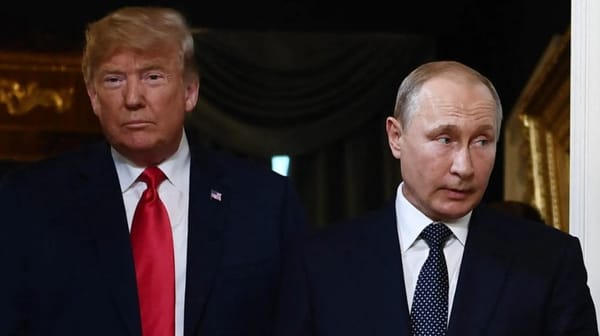Canada’s 2025 Federal Election Results: A Detailed Analysis

Introduction
The 2025 Canadian federal election, held on April 28, marked a pivotal moment in the nation’s political history. Against a backdrop of economic anxiety, aggressive U.S. trade policies, and rising nationalist sentiment, Canadians delivered a verdict that both reaffirmed the Liberal Party’s dominance and signaled a new era of political complexity. The results, while a victory for Prime Minister Mark Carney and the Liberals, fell short of a decisive majority, leaving the country poised for a period of coalition-building and heightened parliamentary negotiation.
Election Overview
The 2025 election was called after Prime Minister Mark Carney, who succeeded Justin Trudeau earlier in the year, sought a renewed mandate to confront the challenges posed by U.S. tariffs, threats to Canadian sovereignty, and a host of domestic issues including inflation, housing, and climate policy. The campaign was defined by the question: who could best defend Canada’s interests in the face of unprecedented external pressure, especially from the United States?
A total of 343 seats in the House of Commons were contested, reflecting the new electoral map based on the 2021 census. To secure a majority government, a party needed to win at least 172 seats.
Liberal Party: Fourth Term, But No Majority
The Liberal Party, under Mark Carney, secured a fourth consecutive term in government, a historic achievement in modern Canadian politics. However, the victory was not absolute. Early projections and final tallies indicated the Liberals would form a minority government, falling short of the 172-seat threshold required for a majority.
Seat Tally and Performance
- Liberals: Won 160 seats, leading in up to 8 additional ridings as final counts continued. This marks an increase from their standing at dissolution (152 seats), but not enough for a majority.
- Popular Vote: The Liberals won the popular vote, reversing a trend from previous elections where the Conservatives had edged them out in raw ballots.
Carney’s campaign was buoyed by his technocratic image and a message of stability and sovereignty in the face of U.S. President Trump’s threats. The Liberals made significant gains in Quebec and urban centers, particularly Montreal and Toronto, which proved crucial to their victory.
Key Moments
- Carney’s Victory Speech: Mark Carney addressed the nation, asking, “Who’s ready to stand up for Canada with me?” and promising to build a strong, united country.
- Notable Wins: Carney retained his Ottawa-area seat of Nepean, and the party performed well in battleground ridings across Ontario and Quebec.
Conservative Party: Strong Showing, But Short of Power
Pierre Poilievre’s Conservative Party mounted a formidable challenge, capitalizing on public frustration with inflation and cost-of-living issues. Early in the campaign, polls suggested the Conservatives could win a majority, but the party ultimately finished second.
Seat Tally and Performance
- Conservatives: Won 140 seats, with leads in up to 4 more as of the final count. This was a slight decline from their dissolution number (120 seats), and not enough to form government.
- Popular Vote: The Conservatives’ share of the popular vote increased, but it was not enough to overcome Liberal strength in key urban and suburban ridings.
Notable Developments
- Poilievre’s Defeat: In a major upset, Pierre Poilievre lost his long-held riding of Carleton, ending a seven-term streak in Parliament. This result shocked party supporters and raised questions about the Conservatives’ future leadership.
- Regional Performance: The party maintained dominance in the Prairies and rural Ontario but struggled to make inroads in Quebec and major cities.
Bloc Québécois: Holding Ground in Quebec
The Bloc Québécois, led by Yves-François Blanchet, continued to be a formidable force in Quebec.
Seat Tally
- Bloc: Won 22 seats, leading in one more. This was a slight decrease from their previous total but maintained their status as the third-largest party in the House of Commons.
Impact
The Bloc’s performance reaffirmed the party’s relevance in Quebec, where nationalist sentiment remains strong, especially amid external threats to Canadian sovereignty.
New Democratic Party (NDP): Setback and Leadership Change
The NDP, led by Jagmeet Singh, suffered significant losses, reflecting a strategic squeeze between the Liberals and Conservatives.
Seat Tally
- NDP: Won 4 seats, leading in three others. This result was far below the threshold for official party status and marked a dramatic setback for the party.
Notable Events
- Singh’s Resignation: Jagmeet Singh lost his Burnaby Central seat and announced his resignation as party leader. In his concession, Singh emphasized optimism and the party’s historic role in building Canada, vowing that “we aren’t going anywhere.”
Green Party and Others: Marginal Presence
The Green Party, led by Elizabeth May and Jonathan Pedneault, retained a minimal presence in Parliament.
Seat Tally
- Greens: Won one seat, with May holding her Saanich-Gulf Islands riding. Co-leader Pedneault was defeated in Outremont, Montreal.
- Other Parties: The People’s Party, Christian Heritage Party, and others failed to secure seats.
Regional and Demographic Patterns
Urban vs. Rural Divide
The election reinforced Canada’s growing urban-rural political divide:
- Urban Centers: Liberals dominated in Toronto, Montreal, Vancouver, and Ottawa, winning over diverse, multicultural electorates.
- Rural and Prairie Provinces: Conservatives retained strongholds in Alberta, Saskatchewan, and rural Ontario, reflecting ongoing polarization.
Quebec
Quebec remained a battleground, with the Liberals and Bloc Québécois splitting the province and the Conservatives making only modest gains.
Atlantic Canada
The Liberals continued to perform well in Atlantic Canada, though the region’s overall seat count is relatively small.
Voter Turnout and Engagement
The 2025 election saw record early voting, with 7.3 million Canadians casting ballots before election day. Overall turnout was among the highest in recent history, reflecting the high stakes and intense public interest in the outcome.
Key Issues That Shaped the Election
U.S. Influence and Sovereignty
The most dominant theme was the threat posed by U.S. President Trump’s tariffs and rhetoric. Trump’s imposition of 25% tariffs on Canadian goods and 10% on energy imports, as well as public suggestions that Canada would be better off as a U.S. state, galvanized nationalist sentiment and became a central campaign issue.
Economy and Cost of Living
Canadians cited inflation, housing affordability, and job security as top concerns. The Liberals and Conservatives both promised tax cuts for the lowest income brackets, but the Liberals’ message of stability and competence resonated more strongly in key swing ridings.
Climate and Energy
While climate policy was less dominant than in previous elections, debates over energy exports and carbon pricing remained relevant, especially in the context of U.S. tariffs on Canadian energy.
Leadership Outcomes and Party Futures
Mark Carney’s Mandate
Carney’s victory, though lacking a majority, represents a dramatic comeback for the Liberals, who trailed the Conservatives by 20 points in early 2025 polling. Carney’s technocratic background and crisis management credentials reassured voters anxious about Canada’s place in a turbulent world.
Conservative Uncertainty
Poilievre’s defeat in his own riding is expected to trigger a leadership review and possible contest within the Conservative Party. The party’s inability to break through in urban and Quebec ridings remains a strategic challenge.
NDP at a Crossroads
With Singh’s resignation and the party’s diminished status, the NDP faces a period of introspection and rebuilding. The loss of official party status could further erode its influence in Parliament.
Parliamentary Dynamics and Prospects for Governance
Minority Government Realities
With the Liberals short of a majority, Carney must seek support from other parties to pass legislation. This could take the form of formal coalitions or confidence-and-supply agreements, most likely with the Bloc Québécois or remaining NDP members. Minority governments in Canada rarely last more than two and a half years, suggesting another election could come sooner rather than later.
Policy Priorities
Carney’s immediate challenges include:
- Negotiating with the U.S. to mitigate the impact of tariffs and protect Canadian industries.
- Delivering on promises to address housing, inflation, and healthcare.
- Managing a divided Parliament and maintaining public trust amid ongoing economic uncertainty.
Conclusion
Canada’s 2025 federal election was a watershed moment shaped by external threats and internal divisions. Mark Carney’s Liberals secured a historic fourth term, but without a majority, the government’s stability and effectiveness will depend on its ability to build alliances and respond to the pressing challenges facing Canadians. The results underscore both the resilience of Canadian democracy and the complexities of governing in an era of economic and geopolitical upheaval.
2025 Canadian Federal Election Results (Preliminary)
| Party | Leader | Seats Won | Popular Vote (%) |
|---|---|---|---|
| Liberal | Mark Carney | 160 | ~34% |
| Conservative | Pierre Poilievre | 140 | ~32% |
| Bloc Québécois | Yves-François Blanchet | 22 | ~7% |
| NDP | Jagmeet Singh | 4 | ~12% |
| Green | Elizabeth May/J. Pedneault | 1 | ~2% |
| Others/Independents | Various | 0 | <2% |
Majority threshold: 172 seats (out of 343)
The coming months will test the durability of Carney’s minority government, the adaptability of Canada’s political parties, and the country’s capacity to chart its own course in a rapidly changing world.




